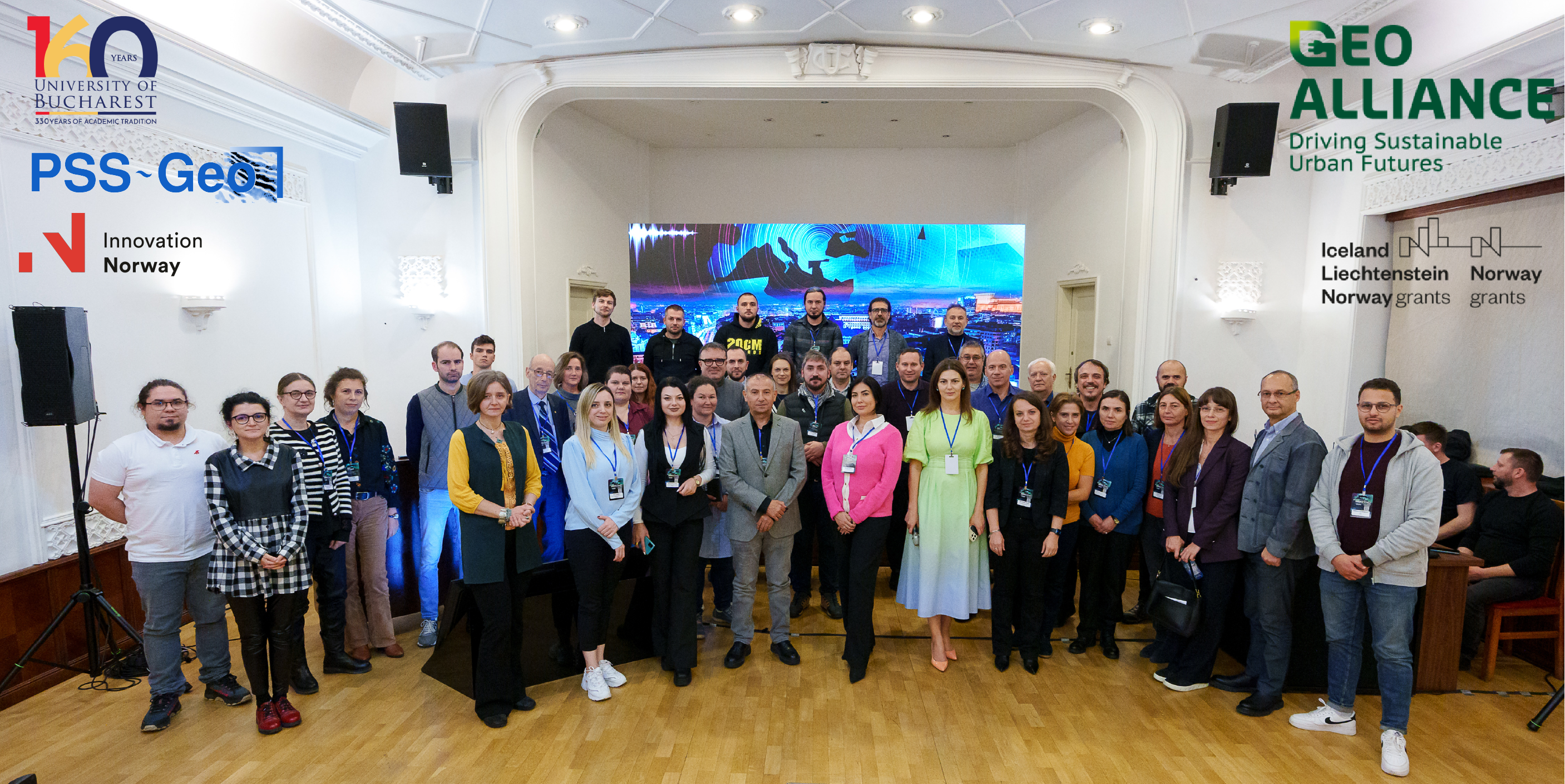On behalf of the University of Bucharest, the implementation team was formed by Florina Ţuluca, Dumitru Ioane, Lucian Petrescu, Iulian Popa, Lonelia Panea, Ioan Munteanu, Nicolae Cruceru, Mihaela Roca, Mihaela Scradeanu, Andrei Voda, Loredana-Sanda Botos, members of the Faculty of Geology and Geophysics, Georgiana – Radulescu and Andreea Carstea
Juri Muzi, Vita Kalashnikova, Aleksnadru Schlett, Alena Finogenova, Rune Øverås, Viktor Gomulsky, Natalia Kuklina, Roy Mackinnon, Andrei Voronin, Marian Bordeianu (Transgex) And Alessandro Brovelli (Isamgeo Italia S.R.L.), Pre Stack Solutions-Geo (PSS-Geo)
In October 2024, Innovation Norway granted funding for a collaborative project between the University of Bucharest – Faculty of Geology and Geophysics and PSS-GEO entitled “Driving Sustainable Urban Futures: A Romanian — Norwegian Innovation Geophysical Alliance for Green Transition and SMART City Development.” The initiative, carried out under the framework of the Geophysical Alliance for Green Transition and Smart City Development, aimed to address key challenges in the green transition, with a special focus on the geothermal energy sector and enhance efficiency in exploration methodologies as well as integrating geophysics in SMART city management.
Geothermal energy offers immense promise as a sustainable resource, yet the European Union’s geothermal industry faces recurring obstacles. One of the primary issues is its reliance on constant subsidies, which highlights the need to reevaluate exploration and appraisal practices to improve cost efficiency and reduce risks. The prevailing reliance on low-budget methodologies and assumptions often results in suboptimal exploration outcomes, jeopardising the feasibility of many projects.
GeoAlliance, formed by the University of Bucharest, Romania, renowned for its cutting-edge research in geophysics – particularly in environmental geophysics and natural resource exploration – and recognised for its geophysical expertise and fostering global collaborations through state-of-the-art facilities, along with Pre Stack Solutions-GEO (PSS-GEO), a Norwegian company with extensive worldwide hands-on experience in geoexploration and broad expertise in seismic and geophysical methods for lithology and fluid characterisation, developed a comprehensive plan to advance geothermal exploration.
The team investigated the available literature on geothermal knowledge in the EU, conducted studies focusing on the Romanian region, systematised modern methods used in geothermal energy exploration, proposed their application, and identified ways to improve efficiency. The resulting materials were compiled into study guides and handbooks, featuring both modelled and real examples to address challenges in geothermal exploration effectively.
It must be noted that several EU-funded grants have already been executed in the field of geothermal energy, including in Romania. During the research, many interesting and much-needed projects were identified. However, due to various challenges, some projects struggle with implementation in the industry.
This article provides an overview of the work carried out. The results obtained in the frame of the project were presented at workshops and technical knowledge transfer sessions organized with local stakeholders, authorities, and students. Additionally, educational materials were developed to further enhance knowledge dissemination and capacity building in geothermal exploration.
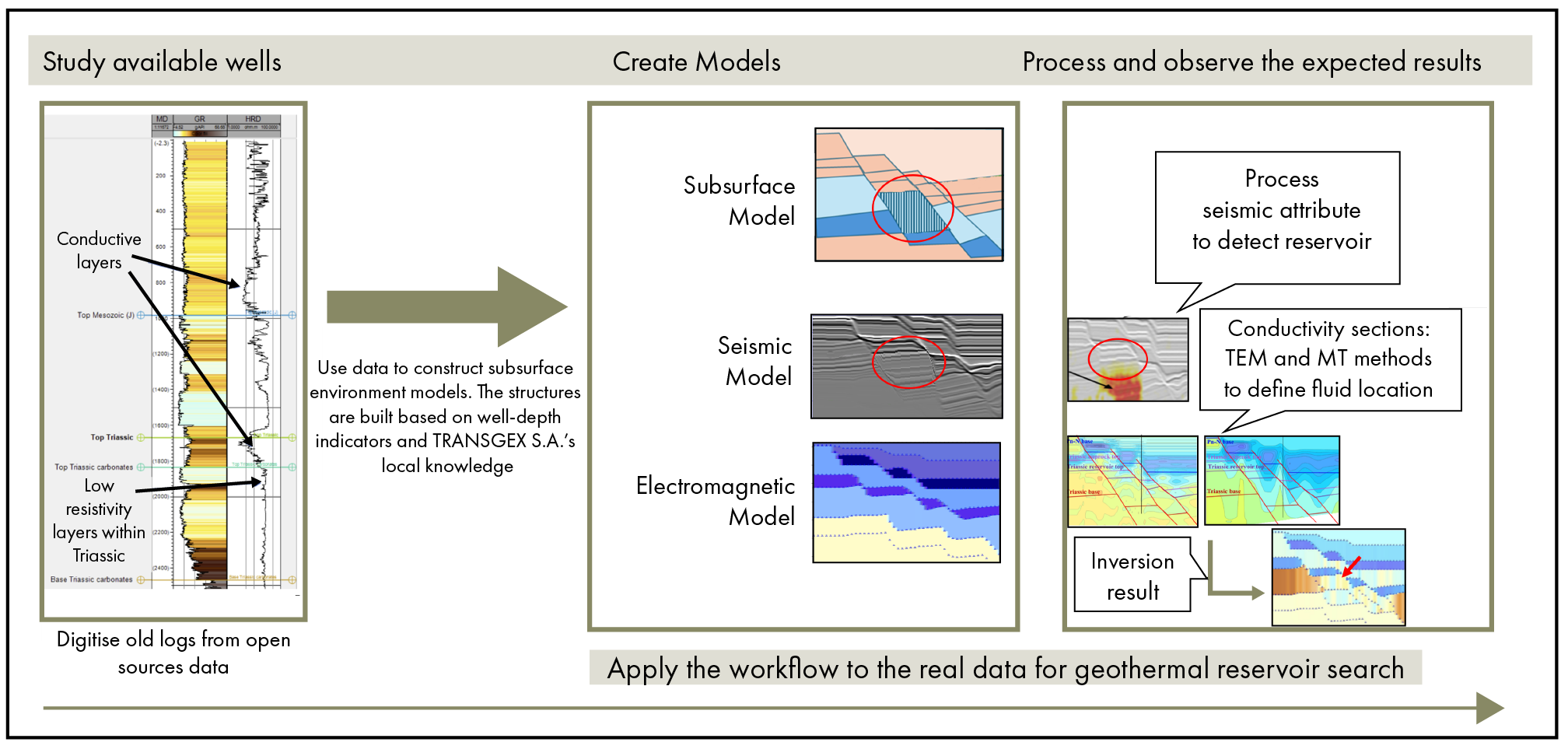
Main challenge geothermal exploration in the EU
Geothermal resources are broadly categorised into low-enthalpy and high-enthalpy systems. Low-enthalpy reservoirs are characterised by limited temperature ranges, while high-enthalpy systems feature high flow-rates and high temperatures. In most cases within continental Europe, low-enthalpy reservoirs are common. These are economically efficient for district heating, making them a sustainable option for local energy needs. However, using low-enthalpy resources for electricity generation is more challenging. It often requires organic fluids with lower boiling points to produce power, but achieving efficiency on a wide scale remains problematic.
The primary challenge in geothermal exploration within the EU lies in the high financial risk and uncertainty associated with subsurface resource identification. Due to the lack of precise subsurface models, many geothermal projects face inefficiencies, such as drilling wells that fail to produce the expected flow rates or temperatures. Additional problems arise when extraction boreholes are placed too close, influencing each others productivity, or when injection borehole position is not well considered.
These challenges are exacerbated by the reliance on limited data, budget constraints, and the underutilisation of advanced geophysical methods, such as seismic surveys and deep-electromagnetic soundings. Additionally, administrative and regulatory hurdles, as well as insufficient data sharing across borders, hinder the development and scalability of geothermal energy projects.
For example, drilling a geothermal well to a depth of 2 km, at the cost of approximately €2 million, without a comprehensive understanding of subsurface geology frequently yields disappointing results – producing as little as 2 l per second of hot water instead of the desired 65 l. This reality underscors the need for precise subsurface modelling to mitigate financial risks and ensure better project outcomes.
The difficulties are further compounded by challenges in data acquisition within urban areas. These include the complex geometry of surveys, interference from urban noise, and the bureaucratic hurdles associated with obtaining permits for measurements, all of which create significant obstacles to effective geothermal exploration.
What about old data?
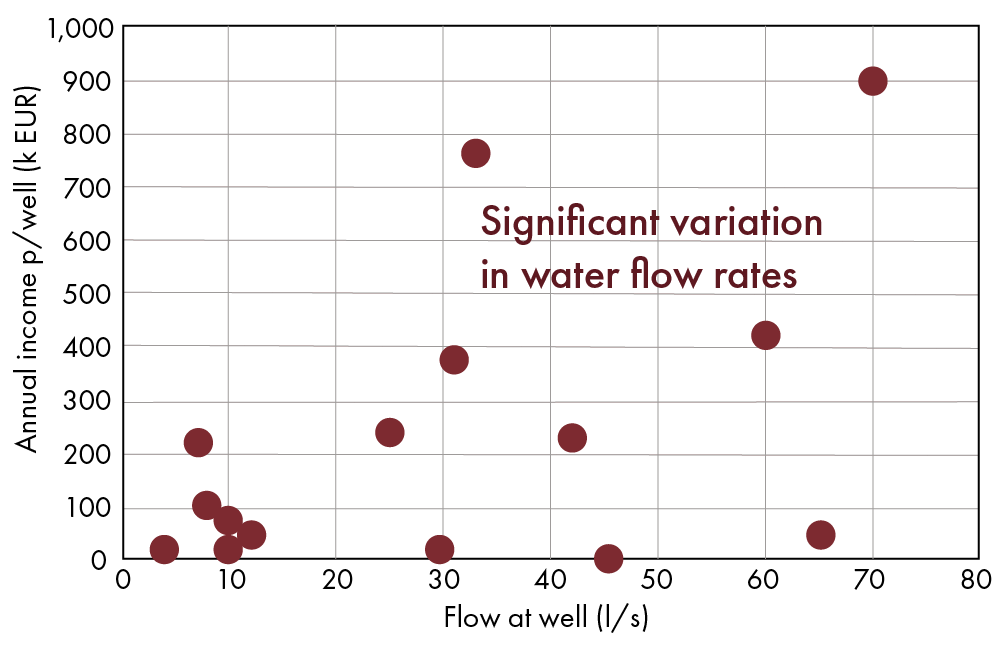
Romania is an established oil and gas producer with a wealth of drilled and abandoned wells, as well as extensive archives of old 2D seismic data. These resources present a significant opportunity to be revitalised and repurposed for geothermal energy exploration. The practice of using old data has been widely adopted in other regions, such as the USA, where the National Geothermal Data System (NGDS) leverages historical data – originally gathered for oil and gas exploration – to assist in identifying geothermal resources. A recent study in the Gulf of Suez (Shawky et al., 2024) also demonstrates the utilisation of abandoned well logs and old seismic data to model deep geothermal resources, highlighting the cost-effective potential of reinterpreting legacy data for sustainable energy development.
While some countries serve as good examples of subsoil data accessibility, in other EU nations, publicly available data – such as thematic maps – are often outdated, scarce, or difficult to obtain. This lack of accessibility can significantly delay investment, sometimes extending the process by several years.
Solutions
The project addressed key challenges by enhancing subsurface understanding. A feasibility study was conducted before applying real data, using well log data (Vp, Vp/ Vs ratio, density, resistivity, and gamma) to estimate rock properties and identify geothermal reservoirs. Integrating these with seismic data improved depth accuracy and structure localization, while resistivity methods provided insights into fluid presence and reservoir volume.
GeoAlliance first performed synthetic modeling on the Beiuș geothermal field, demonstrating seismic data’s ability to pinpoint fluid-bearing subsurface structures. Electromagnetic (EM) studies further validated and de-risked findings. Seismic data played a critical role in identifying subsurface structures and fluid content. 2D seismic surveys (~€100,000, a small fraction of geothermal exploration costs) significantly improves subsurface model accuracy. Integrating seismic and well log data enhanced targeting accuracy, depth precision, and optimal drilling zone identification. Additional geophysical methods (electrical and EM surveys) refined imaging and reduced fluid accommodation uncertainties.
GeoAlliance also developed thematic maps using publicly available datasets, including national heat flux and temperature at 3,000 m, and consulted for SMART city solutions which could benefit from geophysical data. The project has gained strong interest within Romania’s geoscientific community. Post-project, the University of Bucharest’s Faculty of Geology and Geophysics, alongside professional associations, will continue updating the GeoAlliance dataset and develope new geothermal research. Results will be publicly shared in future publications.
Assessing the worth
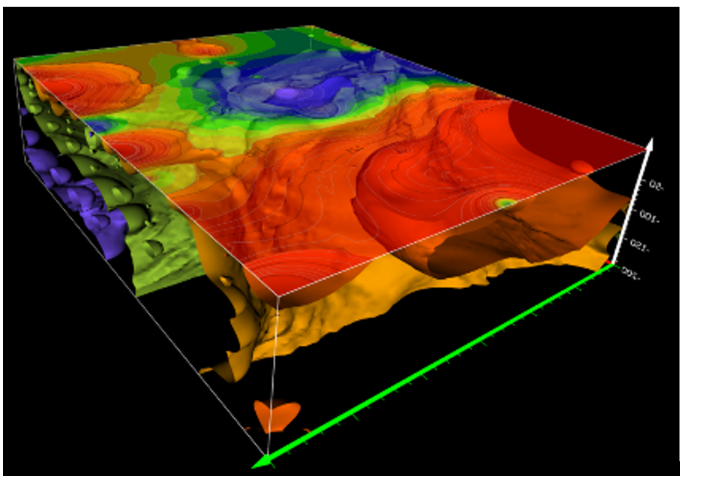
To evaluate the potential of seismic methods in resource prospecting, the likelihood of encountering economically viable reservoirs is typically assessed based on two factors. The first is the probability of identifying a reservoir at the target depth, and the second is the probability of achieving a flow rate sufficient for commercial viability. Successful prospects are generally located at depths between 1,500 and 3,500 m. Depths shallower than 1,500 m often fail to provide adequate temperatures, while depths beyond 3,500 m are constrained by high drilling costs and technical challenges. On average, for well-constrained initial geological models, our observations indicate a significant increase in probability, reflecting enhanced confidence in reservoir localisation and characterisation. These advancements directly lead to higher expected values for geothermal prospects and a considerable reduction in exploratory risks.
As part of the project, we have also explored the potential of reusing historical electrical resistivity data. In the past, such surveys were conducted down to depths of 300-500 m, as they were primarily a cost-effective prospection method aimed at assessing the electrical signatures of thermal water upwellings in areas known for their geothermal potential.
By revisiting these legacy datasets, we have been able to refine the information and, starting from 1D data, we have successfully developed 3D models. Figure 1 is given as an example result based on a 1962 dataset (Papiu et al., 1962)
Business aspects of case study projects
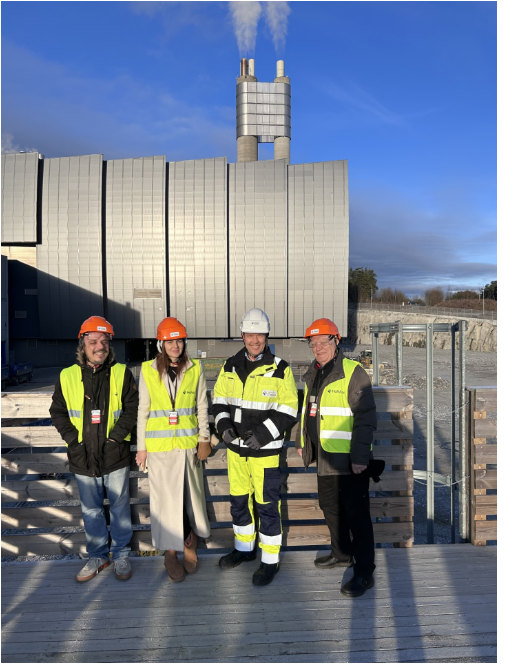
Geothermal projects are proving to be an efficient and sustainable option for district heating using low-enthalpy resources. Case studies in Romania show that geothermal heating is up to 3 times cheaper for end users compared to domestic gas, while emitting 50 % less CO₂ than gas-powered systems.
Local examples highlight its practicality. In Beiuș city, four geothermal wells supply ~80 % of seasonal heating and hot water for over 1,000 homes.
In Tășnad, a single well will heat the future Olympic-class swimming pool. In Oradea, 12 wells, in combination with an electrical gas plant, provide energy for over 145,000 people.
Romania has significant untapped potential for geothermal energy development, supported by geothermal wells drilled since 1960, convertible oil and gas wells, and existing central district heating systems in many cities. Because of that, geothermal designs can be tailored to different needs. For example, the Beiuș project showed the possibility of connecting a new district by drilling a new well and optimising the cost of the distribution system construction by connecting to the pre-existing infrastructure (only 1.7 km of the new pipeline was required). In contrast, the Tășnad development required a new heating distribution system.
Despite its advantages, geothermal energy faces challenges, including high upfront investments (€2.5– 4.8 million per project) and exploration risks. Development timelines of 2–3 years can be a barrier for operators without sufficient incentives. Increased financial support from the state or investment funds (up to 70 %) is critical to attract developers and de-risk projects.
An additional way to improve geothermal efficiency is to decrease the risk during the exploration phase. The analysed wells can have various flow rates and some of them may not meet commercial targets, which clearly correlate with the income from each geothermal well.
Adding energy from waste
GeoAlliance integrates geothermal energy with urban energy systems, emphasizing sustainable solutions for low-enthalpy cases and waste energy utilization. The team visited Hafslund Oslo Celsio Waste-to-Energy plant, which heats 200,000 homes by repurposing excess energy – demonstrating how waste-to-energy can complement geothermal systems for efficient urban heating.
The project also explored managing gaseous emissions from municipal waste deposits as a potential biogas source in areas without waste incineration facilities. Instead of flaring methane, capturing it for electricity generation, supported by geophysical landfill monitoring, can enhance landfill gas management.
A sustainable geothermal future
By integrating revitalized geophysical data with advanced processing technology, the project introduced efficient, sustainable alternatives for geothermal exploration, reducing subsidy reliance and maximizing geothermal energy’s role in the green transition.
GeoAlliance created learning materials for geothermal energy exploration that are available for students and professionals. The learning materials will be demonstrated at the Symposium “Green Energy Frontiers” on 27th February. To obtain materials and services for efficient geothermal exploration, you can contact juri@pss-geo.com
Public communication actions
GeoAlliance hosted events to connect geoscience and engineering perspectives for renewable energy, emphasizing interdisciplinary approaches to the energy transition. As the world shifts to sustainable energy, integrating geological and geophysical expertise with energy professionals is crucial for unlocking renewable resources and achieving a low-carbon future.
GeoAlliance events provided a platform for professionals, researchers, and policymakers to share insights, drive innovation, and foster collaboration. They also highlighted the role of geophysicists and geological engineers in supporting SMART cities, which face challenges in sustainability, public safety, infrastructure, and CO₂ reduction amid growing environmental concerns.
Driving Sustainable Urban Futures: A Romanian-Norwegian Innovation Geophysical Alliance for Green Transition and SMART City Development” is a grant from Iceland, Liechtenstein and Norway through the EEA Grants Romania 2014-2021, in the frame of the SME Growth Programme Romania. Grant number:2024/395080.
THE MAIN EVENTS HELD BY GEOALLIANCE
- Green transition and geophysics for smart cities stakeholders Workshop, 15 November 2024, Bucharest, Romania
- GEOEXPO Geophysical and remote sensing technology for Green Transition & SMART City Development (join action of GeoAlliance & National Institute of Earth Physics, Applied Geophysics, Prevention and Education Laboratory), 15 November 2024
- GeoAlliance & EarthresQue joint workshop, 3 December 2024, Lillestrøm, Norway
- EXPLORING GEOPHYSICS: Green Transition & Smart Cities, 19 December 2024, Buzau, Romania
- Symposium “Green Energy Frontiers. Bridging Geoscience with Energy Professionals” and “Geophysical and Geological Data for Smart City Solutions: Building Safer, More Resilient Communities”, 27 – 28 February 2025, Bucharest, Romania
The presentations at dedicated workshops, has been submitted as follows:
- Finogenova A., Muzi J., Gomulsky V, Bordeianu M. Kalashnikova V., Schlett A., Kuklina F. EAGE 2025 Derisking Potential of Seismic in Geothermal Exploration: A Case Study from Beiuș, Romania—submitted.
- J. Muzi, V. Kalashnikova, A. Finogenova, R. Øverås. EAGE 2025 Electrical surveys in geothermal projects in Romania – potential value for reservoir de-risking: Beiuș case study—submitted.
- Training materials “ Exploration for Geothermal Energy” by GeoAlliance.
- Chitea, F., & Apostolopoulos, G. (2023). Building sustainable futures: An introduction to green transition and smart cities. Presented at 17:30 – 17:45. University of Bucharest, Faculty of Geology and Geophysics, Romania, and NTUA, School of Mining and Metallurgical Engineering, Greece.
- Popa, I. (2023). Transition to renewables in Romania: Hydrothermal vs geothermal resources. Presented at 17:45 – 18:00. University of Bucharest, Faculty of Geology and Geophysics, Romania.
- Fikos, I. (2023). Geophysical investigations in geothermal fields: Basic concepts and applications from Iceland. Presented at 18:00 – 18:15. Aristotle University of Thessaloniki, Greece.
- Ioane, D., Chitea, F., Stanciu, I., & Scradeanu, M. (2023). Geophysical studies for locating new geothermal resources in Romania. Presented at 18:15 – 18:30. Faculty of Geology and Geophysics, University of Bucharest, Romania.
- Muzi, J., & Brovelli, A. (2023). Evaluating the use of active seismic survey in low-enthalpy geothermal projects: A VOI-based methodology. Presented at 18:30 – 18:45. PSS-GEO, Norway, and ISAMGEO, Italy.
- Finogenova, A., Schlett, A., & Bordeianu, M. (2023). Applicability of geophysical surveys in geothermal projects in Romania – Status and potential value for reservoir de-risking: Beiuș and Oradea case study. Presented at 18:45 – 19:00. PSS-GEO, Norway, Transgex S.A., and Babeș-Bolyai University, Romania.
Can be downloaded from here
- Chitea F., Veysel Isik, Reza Saber, Ayse Caglayan., 2024. Geophysics for SMART Cities: Addressing Underground Instability Challenges and detection of near-surface buried Features. În: Chitea F., Dinescu R., Stanciu I., Ioane D., Tataru D., Andra-Toparceanu A. (Eds.), 2024, GEOSCIENCE 2024 – Book of Abstracts, Editura Cetatea de Scaun, Târgoviște, ISBN ebook: 978-606-537-737-0
- Florina Chitea, 2024. Geophysics for improving the management of operational landfills. GeoAlliance & EarthresQue joint workshop, 3 December, Lillestrøm Kommune, Norway
- Florina Chitea, 2024. SMART managing methane production in landfills by integrating geophysical Information. GeoAlliance & EarthresQue joint workshop, 3 December, Lillestrøm Kommune, Norway
- Florina Chitea, Dumitru IOANE, Nicolae CRUCERU, Alin ȘERBAN, Esther BLOEM, Ilias FIKOS, 2024. EXPLORING GEOPHYSICS: Green Transition & Smart Cities. Workshop on EXPLORING GEOPHYSICS: Green Transition & Smart Cities, 19 December 2024, Buzau, Romania
- Overview of GeoAlliance project objectives & results- GeoThermal Bridge Initiative – Oradea 2025
Follow the web page of the project for more materials.
References
- Shawky, A., El-Anbaawy, M. I., Soliman, R., Shaheen, E. N., Osman, O. A., Abdel Hafiez, H. E., & Shallaly, N. A. (2024). Utilization of abandoned oil well logs and seismic data for modeling and assessing deep geothermal energy resources: A case study. The Science of The Total Environment.
- Papiu C., Vijdea V., Constantinescu P. Nicolescu M., Prospectiuni geoelectrice pentru ape termominerale in regiunea Calimanesti-Bivolari, 1962, Works of the Geological Institute of Romania

